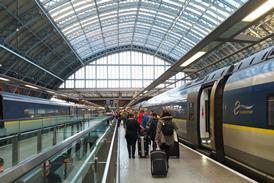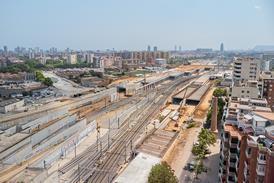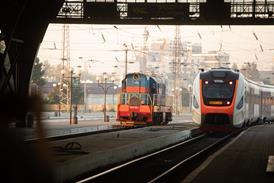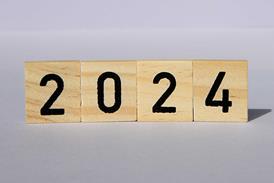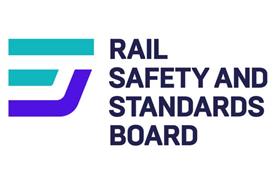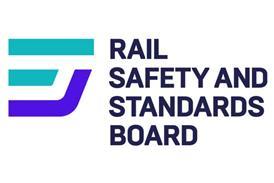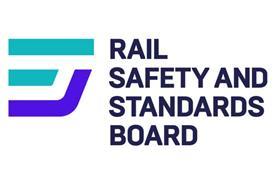INTRO: Norwegian State Railways is testing the first of a fleet of EMUs for regional services. Built in Italy, they have pairs of linked single-axle trailer bogies between the cars. Harry Hondius MSc reports
NOW ON TRIAL with Norwegian State Railways are the first of 32 four-car EMUs for regional services. Ordered in 1997 from a consortium of AnsaldoBreda and SLM, they are being assembled in Pistoia, Italy. SLM’s role in the consortium, which was to supply the unpowered single-axle bogies, has been taken over by Adtranz.
Designated Class 72 by NSB, the trainsets have welded aluminium alloy bodies, with semi-automatic couplings between cars. Automatic Dellner couplers at the outer ends allow three sets to run in multiple. To protect passengers in the event of a collision, the end cars have buffers and integral shock absorbing components, while the frame of the GRP-clad nose has energy absorbing elements to protect the driver.
The powered end bogies are of conventional design with rubber primary and secondary air suspension. The AC traction motor and drive are fully suspended from the bogie frame. Electromagnetic rail brakes complement regenerative braking and air-activated disc and clasp brakes.
Single-axle bogies
Of particular interest are the FEBA SLM self steering single-axle bogies, which are linked in pairs so that they act as an articulated bogie between two cars. Each bogie has primary rubber and secondary air suspension and is coupled by two longitudinal linkages at different heights with its car body to prevent ’galloping’. The two bogies are coupled via two transversal horizontal linkages with four spherical bearings, which allow horizontal and vertical movements of the bogies towards each other.
Each bogie is equipped with vertical and horizontal shock absorbers, an anti-roll stabiliser and longitudinal shock absorbers between the body and bogie. Two or three brake discs are mounted directly on the axle.
Tests carried out with a set of special coaches1 in Switzerland showed that on dry track in 250m radius curves 9° of angular displacement can be obtained, and on wet track 7°. The tests demonstrated that over the whole speed range up to 176 km/h the ride qualities in curves as well on tangent track were strictly in accordance with the specification.
Styled by Pininfarina, the train offers passengers a high degree of comfort. It is fully air-conditioned, and the specification calls for internal noise levels not to exceed 65dB(A) at 160 km/h. Several noise reducing measures are needed to achieve this, including the use of fully-enclosed inter-car gangways.
Both the intermediate cars have low-floor centre sections to allow easy boarding. Part of one car is formed of a multipurpose platform which has a retractable wheelchair lift. The platform also contains a vacuum toilet, which is suitable for wheelchair users.
External passenger information displays are provided on the side of each car and at each end of the set; the internal public address is GPS-driven. Fire detectors are fitted in the passenger saloons, and an automated fire extinguishing system is provided for the traction equipment.
Traction equipment
Power taken at 15 kV 162/3Hz passes to the main transformer in each power car which feeds two converters. The first-stage IGBT four-quadrant converter supplies a water-cooled IGBT inverter that feeds power to the two force-ventilated six-pole AC motors.
Four two-stage IGBT converters each rated at 15 kVA provide power for the roof-mounted heating and air-conditioning pods and for the floor-level electric heaters.
The train has microprocessor controls that use a TCN bus system for multiple operation and transmit commands via the MVB train bus to the various components in each set. The system has 100% built-in redundancy.
Table I. Main data for Norwegian
State Railways Class 72 EMU
TABLE: Power supply 15 kV 16 Hz
Minimum curve radius m 120
Wheel arrangement Bo’ (1’+1’) (1’+1’) (1’+1’) Bo’
Unit length over couplers mm 85570
End car length mm 22100
Centre car length mm 20300
Power bogie wheelbase mm 2500
Distance between axle centres, trailer bogies mm 1300 + 1300
Wheel diameter, new/worn mm 920/850
Seating capacity 310
Seat pitch, facing mm 1625
Seat pitch, face-to-back mm 825
Maximum rating kW 2500
Continuous rating kW 1490
Maximum speed km/h 160
Maximum acceleration m/s2 0·85
Maximum deceleration m/s2 0·9
Weight, empty tonnes 156
Weight to space ratio kg/m2 593
Power to weight ratio kW/tonne 9·56
Weight per seat kg 503
Reference
1. Kraft D, Polach O: Gekoppelte Einzelachsfahr-werke FEBA mit Radialeinstellung erfolgreich erprobt. SER 10.1999.
CAPTION: NSB is currently testing the first Class 72 unit
CAPTION: Fig 1. Floor height in the centre section of each intermediate car is 750mm above rail top. There are eight sets of sliding-plug doors on each side, each with an opening width of 1400mm
CAPTION: Above: Single-axle bogie showing the anti-roll stabiliser on the left and the anti-rotation damper on the right
Below: Two single-axle bogies. The horizontal attaching point for the horizontal connections can be seen; the stabiliser is right
CAPTION: Above: The Class 72 sets are assembled by AnsaldoBreda in Pistoia, Italy

